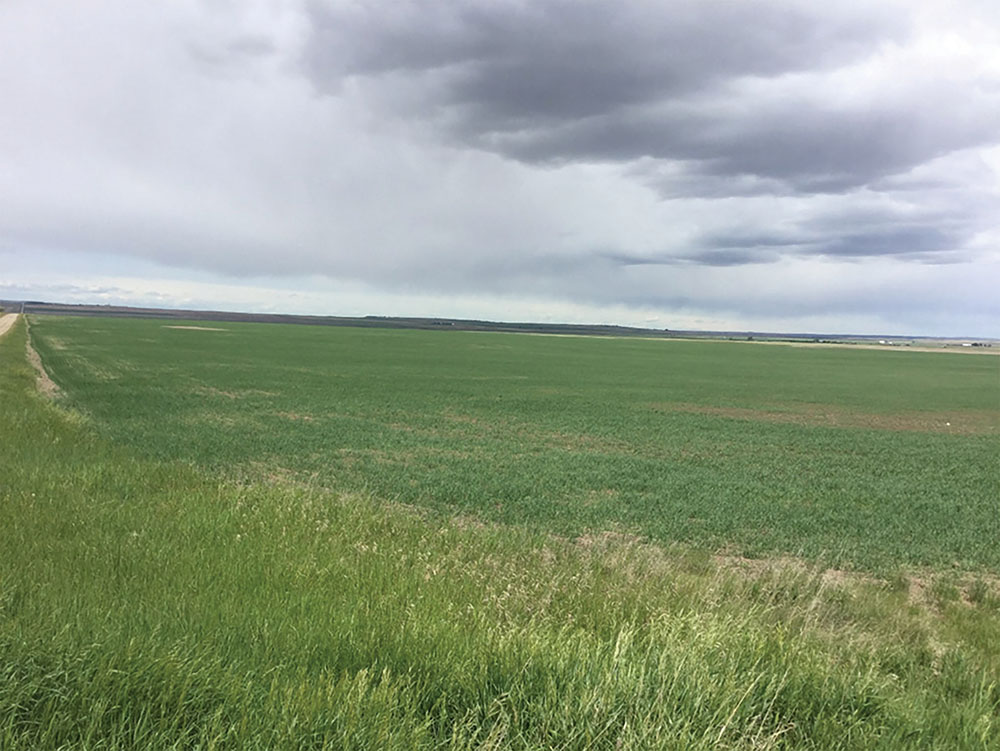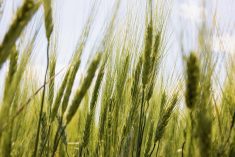
Jeff, a mixed grain and livestock producer who farms near Vulcan, Alta., called me in early June about a problem in one of his durum wheat fields.
Earlier that day, Jeff had noticed the crop looked patchy and uneven while driving by the field. When he walked into the field to investigate, he could see some plants with discoloured leaves and others that were clearly dead.
Jeff, who also grows red spring wheat, malt barley, canola and peas on his 8,500-acre farm, told me he suspected the symptoms could be due to herbicide persistence in the soil, but he wasn’t sure.
“I have had issues with carryover of Group 2 herbicides contributing to crop injury in my durum before. With the serious lack of moisture this year, perhaps this crop injury is also due to herbicide persistence,” he wondered.
I agreed to drive out to Jeff’s place to have a look for myself.
When I arrived at the farm and parked at the edge of the field, I could see the patches and unevenness in the crop that Jeff had described. It also appeared that the areas most affected were situated on the tops of knolls within the field.
When I went into the affected areas to have a closer look, I observed numerous durum plants that had new leaves which were turning yellow and some older leaves turning purple or dying off, as well as some plants that were dead and had been reduced to carcasses.

In addition to the Group 2 that was applied this spring, I was aware of another Group 2 herbicide that had been applied to the same field the previous year in Jeff’s peas. Since the area had experienced severe drought conditions over the last two years, I believed the herbicide persistence in the soil could have been contributing to some of the crop injury I was observing in Jeff’s durum crop on the knolls. However, this didn’t seem to be the main issue at hand.
Jeff was using an air seeder that was relatively new to him, so we wanted to double-check there weren’t any issues at the time of planting. We dug around on the knolls and found the seed had been planted at the correct depth and there didn’t appear to be any fertilizer burn on the seedlings. However, another problem came up when we came to the end of a crop row.
Read Also

Claas brings 1000 Series SP forage harvesters to Canada
In mid-August, Claas unveiled its new line of Jaguar forage harvesters at an event in Visalia, California, deep in the heart of that state’s dairy region.
The dry conditions were clearly contributing to several different forms of crop injury in Jeff’s field, but it appeared there was another piece of the puzzle that was required in order to provide Jeff with an accurate diagnosis.
Crop Advisor’s Solution: Multiple causes for durum damage in Alberta field
Wireworms were the main driver leading to the loss of plant stand in Jeff’s durum, which we could clearly see at the edge of the patches where they were actively feeding on the durum seedlings.
There were a suite of issues occurring in this field and some of the crop injury was caused by the severe drought conditions for two consecutive years. Although drought is something we could not control, after delivering my diagnosis to Jeff, we talked about steps he could take to avoid wireworm damage in the future.
Jeff was not able to correct the damage that had already been done as there are no registered foliar insecticides available for wireworm control. In the future, Jeff will plan to keep wireworms at bay by utilizing an insecticide seed treatment in his wheat crops. Jeff will also abide by economic thresholds when applying foliar insecticides throughout his rotation in order to help preserve beneficial insect populations in his fields.
Most importantly, Jeff will continue to scout his fields early in the season to determine the impact of pests and other external, uncontrollable factors such as a lack of rain. Without an in-depth scout of this field, we could have wrongly attributed the loss in plant stand to drought conditions, but we would have missed the true problem, the wireworms.
Cara Schlaht works for Richardson Pioneer Inc. in Vulcan, Alta.















